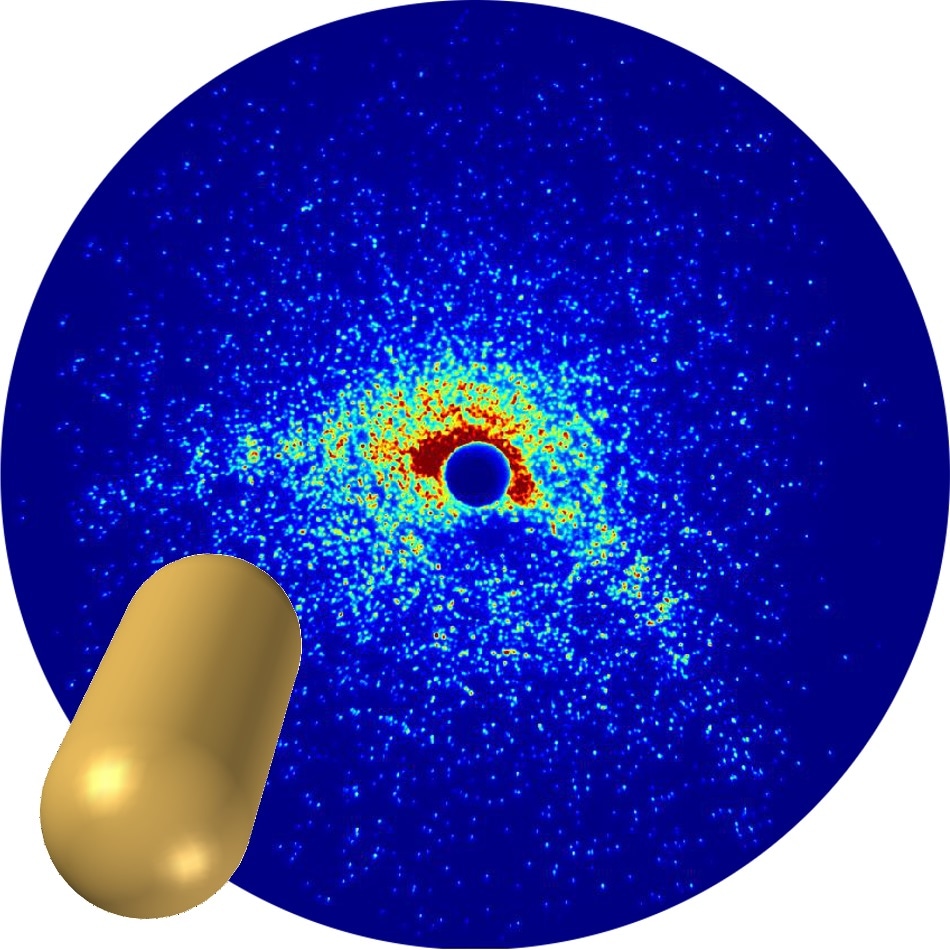Sep 11 2017
In a collaborative research project, Researchers from the Max Born Institute for Nonlinear Optics and Short Pulse Spectroscopy (MBI), the Technische Universität Berlin (TU) and the University of Rostock have succeeded for the first time to image free nanoparticles in a laboratory experiment using a high-intensity laser source.
 Pill-shaped helium nanodroplets can be detected through curved structures in the scatter image. Source: MBI
Pill-shaped helium nanodroplets can be detected through curved structures in the scatter image. Source: MBI
Earlier, the structural analysis of these very small objects via single-shot diffraction was only possible at large-scale research facilities using XUV and X-ray free electron lasers. Their groundbreaking results facilitate the very-efficient characterization of the optical, chemical and structural properties of separate nanoparticles and have recently been published in “Nature Communications”.
The Lead Author of the publication is Junior Researcher Dr Daniela Rupp who performed the project at TU Berlin and is currently launching a junior research group at MBI.
In their experiment, the team expanded helium gas via a nozzle that is cooled to very low temperature. The helium gas changes into a superfluid state and forms a beam of freely flying tiny nanodroplets.
We sent ultra-short XUV pulses onto these tiny droplets and captured snapshots of these objects by recording the scattered laser light on a large-area detector to reconstruct the droplet shape.
Dr Daniela Rupp, Junior Researcher and Lead Author of the publication
“Key to the successful experiment were the high-intensity XUV pulses generated in MBI’s laser lab that produce detailed scattering patterns with just one single shot,” explains Dr Arnaud Rouzée from MBI.
By using the so-called wide-angle mode that provides access to the three-dimensional morphology, we could identify hitherto unobserved shapes of the superfluid droplets.
Professor Thomas Fennel, MBI and the University of Rostock
The research team’s results enable a new group of metrology for testing the structure and optical properties of small particles. Owing to advanced laser light sources, making images of the smallest pieces of matter is no longer restricted to the large-scale research facilities.
Physicist Dr Daniela Rupp worked as a Scientist at the Institute of Optics and Atomic Physics at TU Berlin until Summer 2017. Presently, she is launching a Leibniz Junior Research Group at MBI where she pursues her research on single particle imaging with short and intensive extreme UV light pulses. Her work has been earlier awarded by the DPG’s Dissertation Prize (AMOP Section), the Carl Ramsauer Prize of the Berlin Physical Society and the Physics Graduation Prize of the Wilhelm and Else Heraeus Foundation.